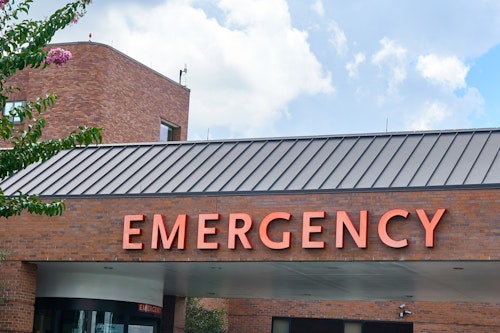The GOP’s New Rural Health Program: All Show and No Go

As part of the One Big Beautiful Bill Act, Republicans created a new “Rural Health Transformation Program” in an attempt to mitigate the harm they inflicted on rural health care. The $50 billion fund is supposed to help rural health providers cope with the $1 trillion cuts to Medicaid. But do not be fooled: the program doesn’t come close to offsetting the bill’s damage.
Instead of a powerful engine to make rural health care sustainable, Republicans have offered a short-term political talking point. It’s a Band-Aid on a giant self-inflicted wound. No temporary grant program can undo the scale of harm this bill will cause. Below are the three biggest problems with the Rural Health Transformation Program:
1. It’s nowhere near enough to offset Medicaid cuts.
Let’s start with the math. The One Big Beautiful Bill Act includes sweeping Medicaid reductions, ranging from limits on provider taxes to caps on supplemental payments and outright eligibility cuts. Together, these changes will slash Medicaid by more than $1 trillion over the next decade, according to the Congressional Budget Office.
Even in narrow terms—just looking at cuts to provider taxes and state-directed payments—hospitals collectively will lose $340 billion. For rural hospitals, these cuts will be especially catastrophic. Rural hospitals alone could see $115 billion in direct losses from Medicaid reductions before even accounting for the indirect fallout like spikes in uncompensated care due to an estimated 12 million people losing their health coverage.
And it’s not just hospitals. Nursing homes, community health centers, and physician practices located in rural communities will also face significant losses. These providers often operate on razor-thin margins and depend on Medicaid to cover everything from basic patient care to workforce salaries. While the $50 billion fund may sound big, it’s dwarfed by the scale of the Medicaid cuts.
2. It doesn’t address the root causes of rural health care instability.
Rural health care didn’t suddenly become vulnerable because of this bill. It’s been on shaky ground for years, facing persistent challenges like lower reimbursement rates, lower patient volume, and workforce shortages. The Rural Health Transformation Program doesn’t solve any of that.
Instead, it creates a short-term, five-year grant program that would offer temporary support after a long delay. States first have to develop and submit detailed “Rural Health Transformation Plans” by the end of 2025. That means most funding won’t even start flowing until 2026, far too late for providers already hanging on by a thread. Even then, the funding isn’t permanent. It’s set to end in 2030 while the cuts to Medicaid are permanent. Once the money dries up, rural providers will be right back where they started—only this time, with even deeper Medicaid cuts undermining their financial stability.
In the meantime, rural hospitals would still face waves of layoffs, service reductions, and even closures. Even before the Medicaid cuts passed, roughly 30% of rural hospitals were already at risk of closure.
Additionally, there are risks that nonrural hospitals, which are not struggling, end up receiving part of the limited funds. Specifically, about 425 hospitals are dually classified as rural and urban. This allows hospitals like Adventhealth in Orlando and New York Presbyterian Hospital in New York City, two of the wealthiest in the country, to quality for a rural designation that not only entitles them to higher payments from Medicare but also access to the rural fund.
3. It leaves out many of the providers most at risk.
The Rural Health Transformation Program’s narrow focus on rural (or dual classification) providers leaves many others completely unprotected even though they, too, will face devastating cuts under this bill.
Urban and suburban safety-net hospitals—many of which serve disproportionately high shares of Medicaid patients—are excluded entirely. These providers play a critical role in caring for low-income families, seniors, people with disabilities, and communities of color, yet they’re left to absorb the full impact of Medicaid cuts with no new funding at all.
In fact, some of the hardest-hit health care provides under this bill won’t receive a single dollar from the program. That includes urban safety-net systems, children’s hospitals with high Medicaid reliance, and community health centers not located in rural areas.
Simply put, this program picks winners and losers, and it leaves behind some of the most vulnerable communities in the country.
The Bottom Line
The “Rural Health Transformation Program” may sound like a good program, but it won’t transform anything. And it’s no substitute for properly funded Medicaid. This proposal offers temporary, limited relief to a narrow slice of providers.
Subscribe
Get updates whenever new content is added. We'll never share your email with anyone.

